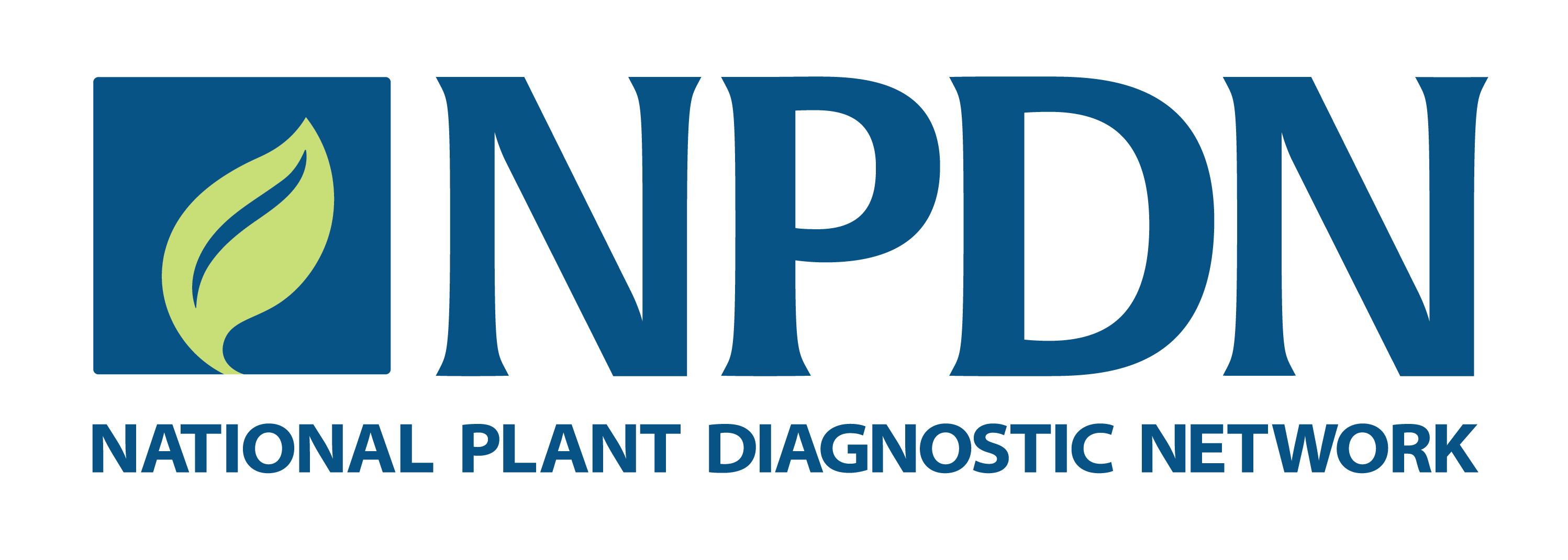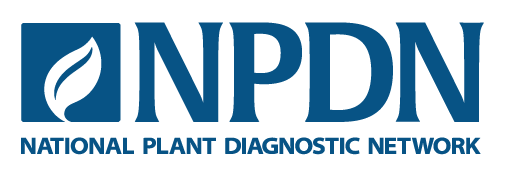This is the first in a series of interviews of APHIS and State Department of Agriculture colleagues conducted by the NPDN Regulatory Relations committee.
 I was born in New York to emigrant parents who were raised on farms in the west of Ireland. My graduate work was in forest pathology and later in plant virology. For 15 years, I was a researcher and lab manager in plant virology at the University of Idaho. I finished my PhD and left Idaho in 2004 as an acting assistant professor to start my career in the U.S. Department of Agriculture. I joined the Science and Technology section of Plant Protection and Quarantine (PPQ) just as the National Plant Diagnostic Network (NPDN) was being organized and just before the PPQ emergency program for Phytophthora ramorum occurred. Since then, I have been involved in that program as well as the plum pox virus eradication program, the pale cyst nematode program, the citrus health response to citrus greening pathogens, and the wheat stem rust programs.
I was born in New York to emigrant parents who were raised on farms in the west of Ireland. My graduate work was in forest pathology and later in plant virology. For 15 years, I was a researcher and lab manager in plant virology at the University of Idaho. I finished my PhD and left Idaho in 2004 as an acting assistant professor to start my career in the U.S. Department of Agriculture. I joined the Science and Technology section of Plant Protection and Quarantine (PPQ) just as the National Plant Diagnostic Network (NPDN) was being organized and just before the PPQ emergency program for Phytophthora ramorum occurred. Since then, I have been involved in that program as well as the plum pox virus eradication program, the pale cyst nematode program, the citrus health response to citrus greening pathogens, and the wheat stem rust programs.
My role gradually shifted to developing diagnostic lab capacity and capabilities for regulatory pathogens. We did this by engaging the NPDN, the state departments of agriculture laboratories, as well as private and commodity group labs. As this role grew, we began testing the use of laboratory quality management concepts for the labs we engage. This led to my involvement in the development of the NPDN STAR-D program as well as supporting the current NPDN quality management and professional development initiatives.
My position continues to evolve. I am now the science and technology (S&T) lead in providing scientific support for the PPQ P. ramorum and plum pox virus programs. These are new roles for me and give me the opportunity to expand my interactions with the NPDN to fulfill the diagnostic needs of these important regulatory programs.
Dr. Patrick J. Shiel
NPPLAP Coordinator, USDA-APHIS-PPQ, Science and Technology – Raleigh, North Carolina
 I was born in New York to emigrant parents who were raised on farms in the west of Ireland. My graduate work was in forest pathology and later in plant virology. For 15 years, I was a researcher and lab manager in plant virology at the University of Idaho. I finished my PhD and left Idaho in 2004 as an acting assistant professor to start my career in the U.S. Department of Agriculture. I joined the Science and Technology section of Plant Protection and Quarantine (PPQ) just as the National Plant Diagnostic Network (NPDN) was being organized and just before the PPQ emergency program for Phytophthora ramorum occurred. Since then, I have been involved in that program as well as the plum pox virus eradication program, the pale cyst nematode program, the citrus health response to citrus greening pathogens, and the wheat stem rust programs.
I was born in New York to emigrant parents who were raised on farms in the west of Ireland. My graduate work was in forest pathology and later in plant virology. For 15 years, I was a researcher and lab manager in plant virology at the University of Idaho. I finished my PhD and left Idaho in 2004 as an acting assistant professor to start my career in the U.S. Department of Agriculture. I joined the Science and Technology section of Plant Protection and Quarantine (PPQ) just as the National Plant Diagnostic Network (NPDN) was being organized and just before the PPQ emergency program for Phytophthora ramorum occurred. Since then, I have been involved in that program as well as the plum pox virus eradication program, the pale cyst nematode program, the citrus health response to citrus greening pathogens, and the wheat stem rust programs.What is your role with USDA-APHIS?
When I started my career at PPQ, I was providing general scientific support to develop better diagnostic tools that could be applied to PPQ programs.My role gradually shifted to developing diagnostic lab capacity and capabilities for regulatory pathogens. We did this by engaging the NPDN, the state departments of agriculture laboratories, as well as private and commodity group labs. As this role grew, we began testing the use of laboratory quality management concepts for the labs we engage. This led to my involvement in the development of the NPDN STAR-D program as well as supporting the current NPDN quality management and professional development initiatives.
My position continues to evolve. I am now the science and technology (S&T) lead in providing scientific support for the PPQ P. ramorum and plum pox virus programs. These are new roles for me and give me the opportunity to expand my interactions with the NPDN to fulfill the diagnostic needs of these important regulatory programs.

